Bhutan Journal
Tandin Ney | Hermitage
Every moment, in doing, in exploring, is alive. It does come down to what our attention is — what are we held by, what are we holding. What are we compelled by, and what draws us to that place of connection.
For me, it is mystery, all ways, pure and powerful. And I’ve been drawn to anything — and everything, which is out of the grasp of the known and the easily seen, for as long as I can remember.
When I first considered the idea of coming to Bhutan, that hidden kindgom, ravenborne, formed in alliance with dragons, the very framing of it spoke to the misting of time and adventure, of imagery and imagination, of content and containment — a heavenly dome, its own world.
So I’d made a journal, starting 2005, to close in 2006, during the year that I’d presumed that I’d be leaving there.
And what I’d admired about that place, that visioning, was this compelling imagery, Tatskang Monastery:

I put that in the last page of my journal, thinking that I’d be there, at the end of it.
Now I’ve still got it, have brought it — and literally, I’ll be heading up there at the very end of the trip. But I’ve been journalling in other books, other forms — two blogs, for the last number of years since that time — so I journal in multiple channels…all the time.
But there are other clinging outposts to remote meditation — and this one is another.
Guru Rinpoche, the marvelous — and marveled at — teacher and definer of Tibetan Buddhism in Bhutan (and other places) left sacred objects hidden. I’m presuming this is allegorical — it’s something that is about the laying of hidden teachings; and that they are held, and can be found by only those that can reach in. Literally.
And in a way, if you spend much time looking into things you’ll begin to sense that there’s far more in Bhutan than meets the eye.
So I’d spied this place up on the hill, overlooking Thimphu, Tandin Ney Monastery. And went up there. Actually, nearly drove up there…There was a kind of funky road up to the lip of the hillock from the outcropping perch of the meditation huts and temple grounds.
But this place was built by someone that thought that there was some kind of revelatory benefits to the place that there were secrets, gems, objects that were hidden by Guru Rinpoche — and so he built this group of houses on the edifice, to capture the potency of the sanctity of the site. That bold decision didn’t sit well, to the judgments of the spiritual planes — and he died quickly later of leprosy. This was described as a situation that was as a result of his doing this without permission — he had the idea, learned of the secret, and chose to promulgate that fact. Not a good plan, so it would appear.
But there are special things to be seen here. Places to sit. And to contemplate how someone comes and does just that — sitting, in serious reflection.
And disappearing from the world for a while.
The Hermitage from beneath.
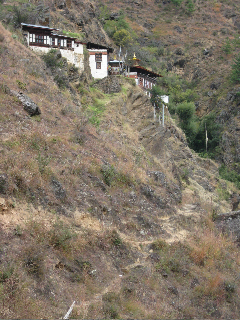
A massive prayer flag installation, on the climb up.
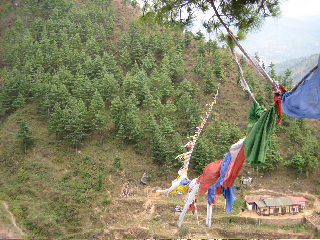
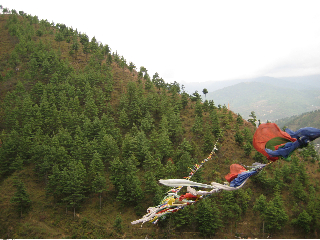
An installation of prayer offerings, in chorten style.
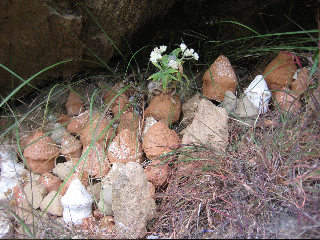
An outpost structure, balanced on the cliff rim.
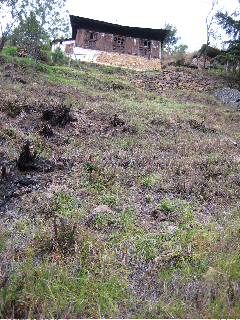
The meditation hall, sited on cliff edge.
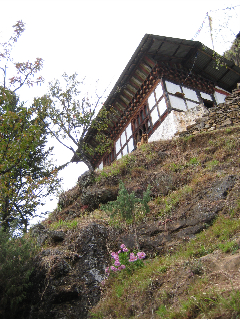
Walkway from each structure of the compound.
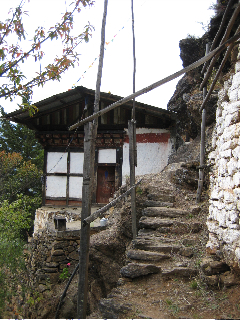
Stairs up to another meditation hut.
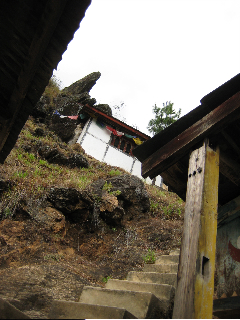
View down, to the lower sections of the grouping of retreat buildings.
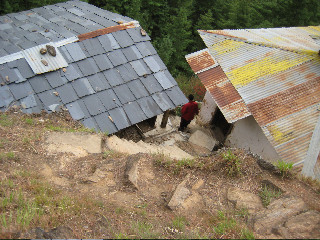
Sitting meditation chamber interiors.
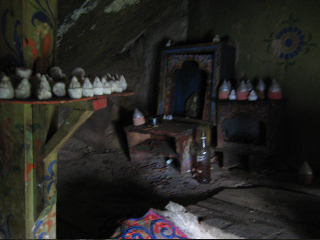
Meditation hut.
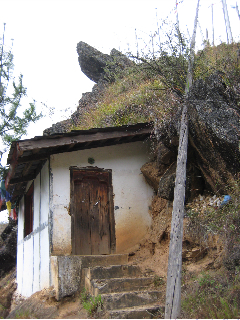
Monk chanting in the small prayer hall.
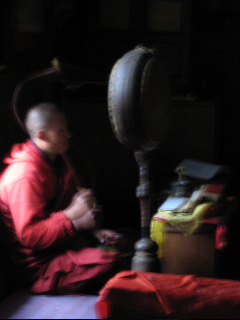
Refuge mascot, contemplating me…
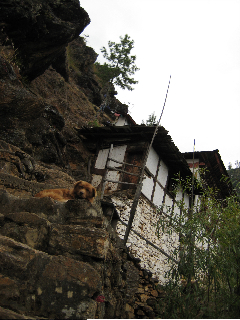
Lower entry to the meditation cave.
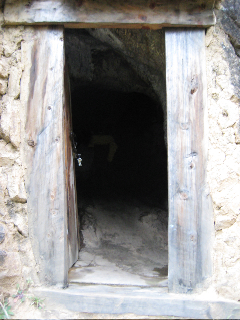
Structural renderings of the support and cantilever system of concrete.
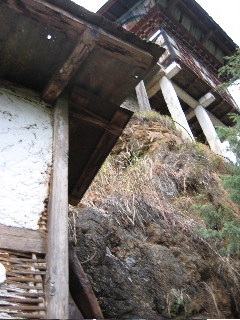
Lower meditation hut.
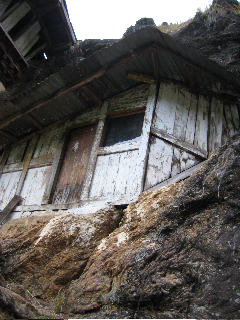
A sense of the precarious siting of the compound.
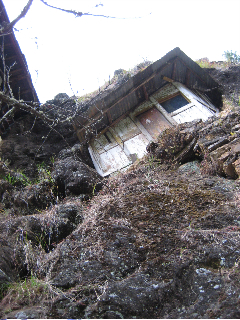
—-
The risk in any contemplation is the opening leap of faith. Once you jump, you’re committed.